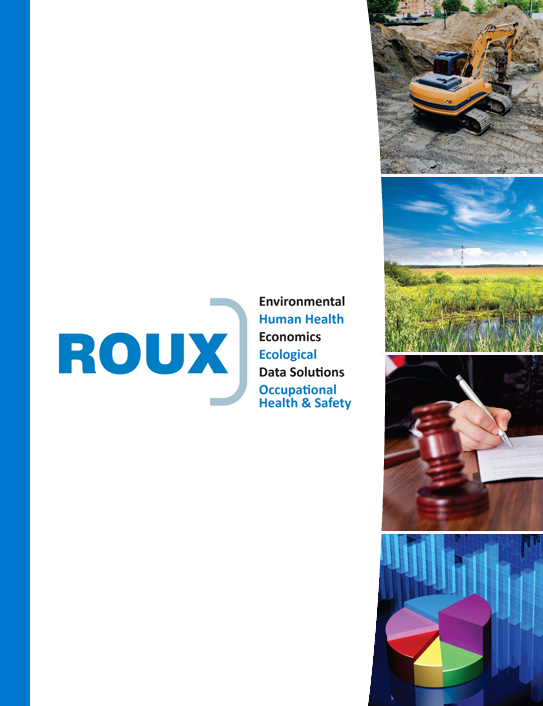NJDEP Adopts Major Revisions to Remediation Standards
The New Jersey Department of Environmental Protection (NJDEP) has adopted several major revisions to their statutory remediation standards rules (N.J.A.C. 7-26D). The revisions were originally proposed on April 6, 2020 and were adopted on May 17, 2021. The rule includes a six-month phase-in period ending on November 17, 2021.
The revisions include:
- Impact to Groundwater, Soil Leachate, and Vapor Intrusion/Indoor Air screening criteria have become regulated and are therefore legally enforceable standards rather than screening levels.
- The Direct Contact Soil Remediation Standards have been split into two separate exposure pathways: Ingestion-Dermal and Inhalation. While compliance with the most stringent standard between these two pathways will still drive remediation for a given contaminant, consistent with the prior rule, additional screening and considerations for each exposure pathway are now required.
- The prior Remediation Standard process for Interim, Alternative, and Remediation Standards has been expanded to include soil and soil leachate for migration to groundwater (i.e., soil and soil leachate), indoor air, and groundwater. In the past, this applied to interim standards for groundwater used as a drinking water source, making the interim standards enforceable until the standard was formally promulgated. This effectively makes all interim standards immediately enforceable for media where direct human exposure is possible.
- Adding definitions of “residential” and “non-residential” based on property use, which were previously undefined. Residential properties would be defined as residences, private and public schools, charter schools, and childcare centers, and non-residential properties as properties used for commercial or industrial purposes.
Included with revisions, the Soil Remediation Standards themselves were subject to significant changes. For a breakdown, see Roux’s prior summary of the changes to numeric standards, which include regulating previously unregulated compounds in soil (i.e., 1,4-dioxane and Extractable Petroleum Hydrocarbons [EPH]), more conservative Soil Remediation Standards for multiple contaminants for both residential and non-residential soil exposure pathways, deregulating compounds that toxicological data no longer support regulating as a contaminant, and providing more lenient Soil Remediation Standards for a large number of contaminants for both residential and non-residential soil exposure pathways. Changes to the numeric standards originally included in the April 2020 proposal when promulgated on May 17, 2021 were limited to promulgating Soil Remediation Standards for 14 contaminants, and were more lenient than in the proposed rule for both the residential and non-residential ingestion-dermal exposure pathway (i.e., not a significant change from the proposed rule).
Where Remediation Standards became more stringent by an Order of Magnitude, the promulgated standard is not subject to the phase-in period outlined in the rule. Sites that are currently undergoing remediation or hold a Remedial Action Permit are subject to reassessment for these compounds effective immediately. These revised Remediation Standards have the potential to alter the scope and/or cost of some remedies and include:
- Five compounds for residential soil exposure pathways.
- Four compounds for non-residential soil exposure pathways.
- Five compounds for the migration to groundwater exposure pathway.
- One compound for the residential and non-residential vapor intrusion indoor air exposure pathway (e.g., 1,1-dichloroethene).
- Some compounds of note subject to Order of Magnitude decreases in Soil Remediation Standards include cobalt, copper, ethylbenzene, etc.
Other key take-aways from the new rule and from various guidance documents published concurrently with adoption of the new rule include:
- The Vapor Intrusion Guidance has been updated to include revised vapor intrusion screening levels for groundwater and soil gas in addition to the promulgation of enforceable indoor air standards. For the groundwater vapor intrusion screening levels (i.e., screening levels that trigger a vapor intrusion investigation), these changes have resulted in more stringent standards for/new regulation of four contaminants, more lenient screening levels for 12 contaminants, and deletion of 14 contaminants. For the soil gas screening levels (i.e., screening levels that identify contaminants related to subsurface conditions), these changes have resulted in more stringent standards for/new regulation of six contaminants, more lenient screening levels for up to 12 contaminants, and deletion of 14 contaminants. Changes to these screening levels have implications for which contaminants of concern will initiate a vapor intrusion investigation and the degree to which contaminants found in indoor air will be deemed attributable to subsurface impact.
- The Alternative Remediation Standards are available for soil exposure pathways, migration to groundwater pathway, and vapor intrusion pathway, and include new methodologies with corresponding NJDEP-issued calculators. These methods have the potential to alleviate the need for an engineering control (i.e., a cap for the soil exposure pathway) using risk-based methods and/or site-specific data, though institutional controls will be required to maintain the assumptions of the risk assessment. Without an engineering control, the responsible party is not required to post financial assurance (i.e., a letter of credit or Remediation Trust Fund to cover the cost of maintaining the engineering control and associated reporting for 30 years). The new methods and guidance for calculating Alternative Remediation Standards using a risk-based approach therefore has significant implications for the long-term financial obligations associated with Remedial Action Permits.
Ballard Spahr discusses the practical implications of the NJDEP’s adoption of the new rule for businesses buying, owning, operating, or remediating properties in New Jersey in their analysis of the new rule.
If you have any questions, or would like additional information, please click on the button below.
